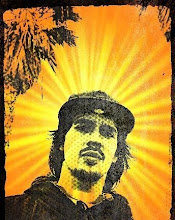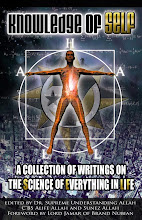
Despite my own contentions with the term "Hispanic" because of its obvious conveyance of Spain's cultural dominance over our identity, the following article is good. It shows the denial and reluctance to accept who we are as so-called "Latin Americans" which stems from the conditioning and miseducation we received over the past 516 years of oppression. This labels of identity, fostered by someone other than our own selves, that we ultimately aligned ourselves with and pledge allegiance to, as if the people who created these terms had the majorities best cultural interest in mind.
Afro-Latino’s View on National Hispanic Heritage Month
Written by Christopher Rodriguez - Blacktino.net
"National Hispanic Heritage Month is celebrated throughout the nation between the dates of September 15 and October 15, to observe the historical contributions Hispanics/Latinos have made in the United States especially in the arts, literature, music, politics and education.
Since I was born in the United States, this was a great opportunity to celebrate the diversity of people, which has become a hallmark of our nation’s history.
It is one of my favorite times of the year that allows me the opportunity to attend numerous cultural events and I can taste food samplings from all over Latin America and the Caribbean. I get to see dance troupes, panel discussions, keynote speeches highlighting the positive aspects of Hispanic/Latino culture.
However, in the late 1980’s, I was serving as EEO Manager at a major scientific research and development agency, and I decided that it would be a good idea to celebrate the contributions of Africans in the Americas. I invited Dr. Marta Vega, a pre-eminent Afro-Caribbean Scholar and founder of the Caribbean Cultural Center in New York City. As a History major, I was taught by Puerto Rican and other Latin American Scholars that Latino culture is an amalgam of Spanish, Indian and African cultures. I was working on the assumption that it would be interesting for everyone, especially African American employees who were not aware of the African presence in the Spanish speaking Americas.
I naively organized this event to educate employees in our federal workforce about the diversity of Latin American culture, and showcase the African contribution to Latino culture, as we know it today. Much to my dismay, I received a flood of phone calls from Latino employees asking why was I planning a Black activity during Hispanic Heritage Month. I was truly amazed at the uneducated responses, because these employees were individuals with advanced graduate degrees, who had received training at some of the most prestigious universities in the world. Yet, they were totally miseducated about the African contributions in their homelands.
Even when I presented the callers with historical facts, I was unable to assuage their concerns, because they may have seen my actions as divisive. They perceived this activity would elicit racial discussions, which will divide employees based on race. I decide to go ahead with the event despite the fact that they decided not to attend. The activity was well attended by primarily a non-Latino audience, who appreciated the new found knowledge they received from Dr. Vega. I guess my Latino compatriots decided to go on strike and not attend the event.
Initially, I was emotionally wounded from this experience, because I started remembering my own grandparents who were people of obvious African descent, who could not celebrate their time and contributions on this earth. How could it be divisive to celebrate my own family? Even though while growing up my Christian parents shielded me from the whole discussion of race, because according to them we were all children of God. Obviously, these arguments were a pretext for something which was deeply ingrained in the cultural upbringing of most Latinos.
I did not want to dismiss it as simply racism, but the question remained what are the historical roots of these sentiments, and how can I address this issue in a strategic fashion? The idea came to mind to, that I must write a book about the roots of these racial sentiments and attack the mythology that racism is not a factor in Latin American and Caribbean culture. The experience of researching and reviewing historical documents of the race based immigration policies; abolitionist’s movements in Spain and the Caribbean; educational policies and labor laws governing people of color in the Americas; was a journey comparable to Alex Haley’s famed book “Roots.”
As a result, I have gained incredible spiritual strength from my wounds, and this has led me to places I would never have imagined. The ancestors showed me how to turn this experience from being a lemon into lemonade. As National Hispanic Heritage Month comes closer, I want to encourage all Afro-Latinos to think about what will be your contribution to the education of our people, and serve as a bridge to Latinos and African Americans and highlight the commonalities of our legacies in the U.S. and the rest of the Americas."
Christopher Rodriguez is an activist, author and lecturer and has written a book entitled the Latino Manifesto: A Critique of the Race Debate in the U.S. Latino Community. For more information go to www.Latinomanifesto.com.
© Copyright 2007 Blacktino e-News Network
Original source: Blacktino.net



























